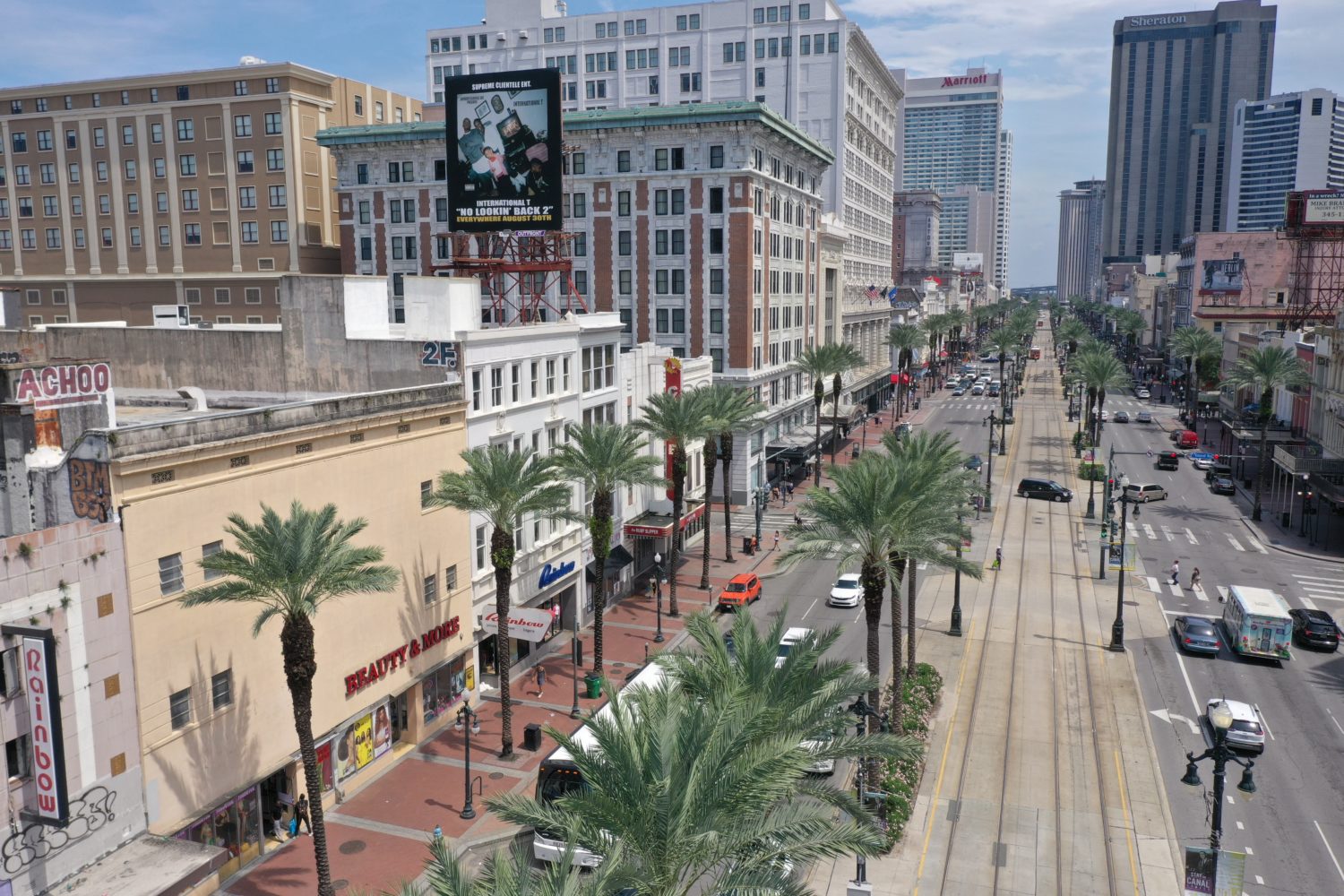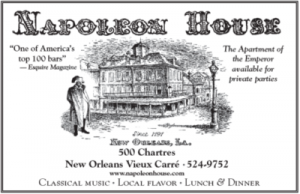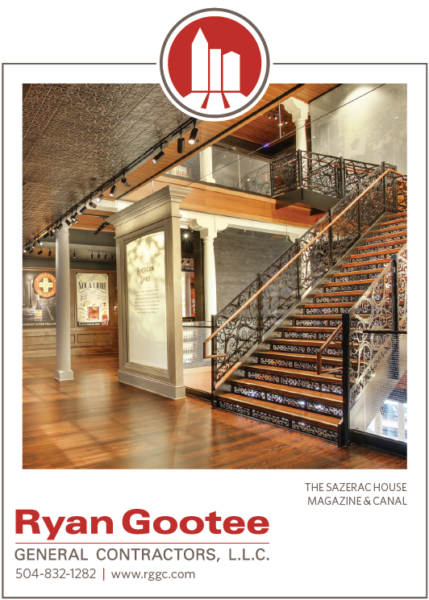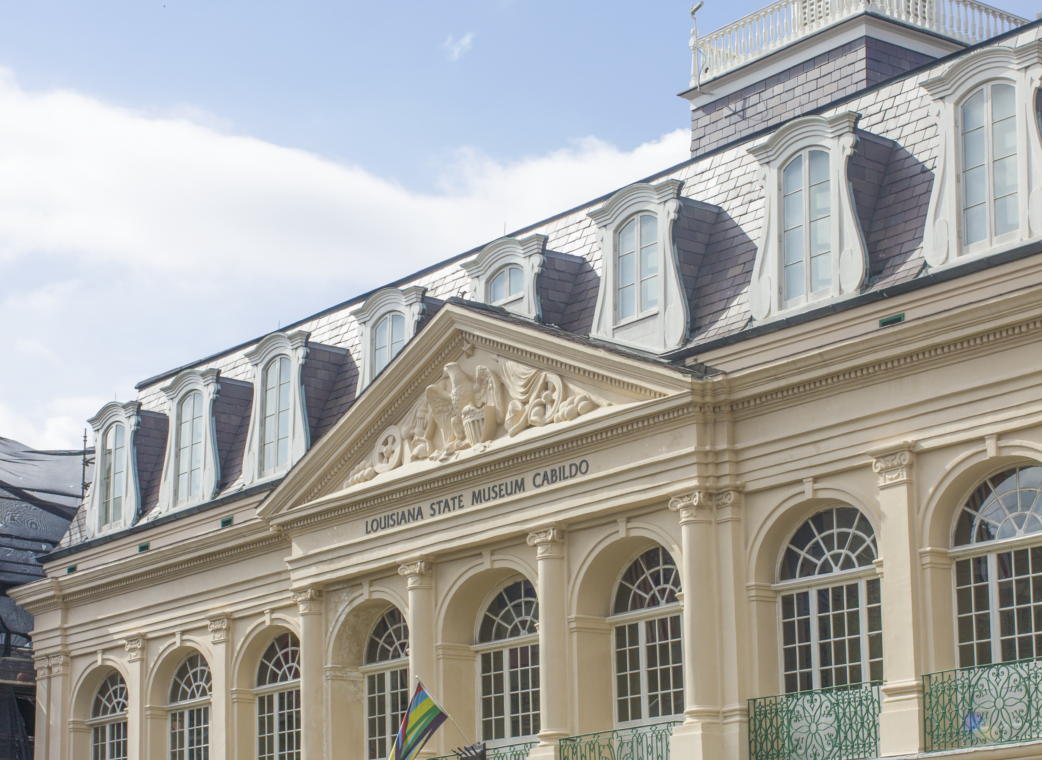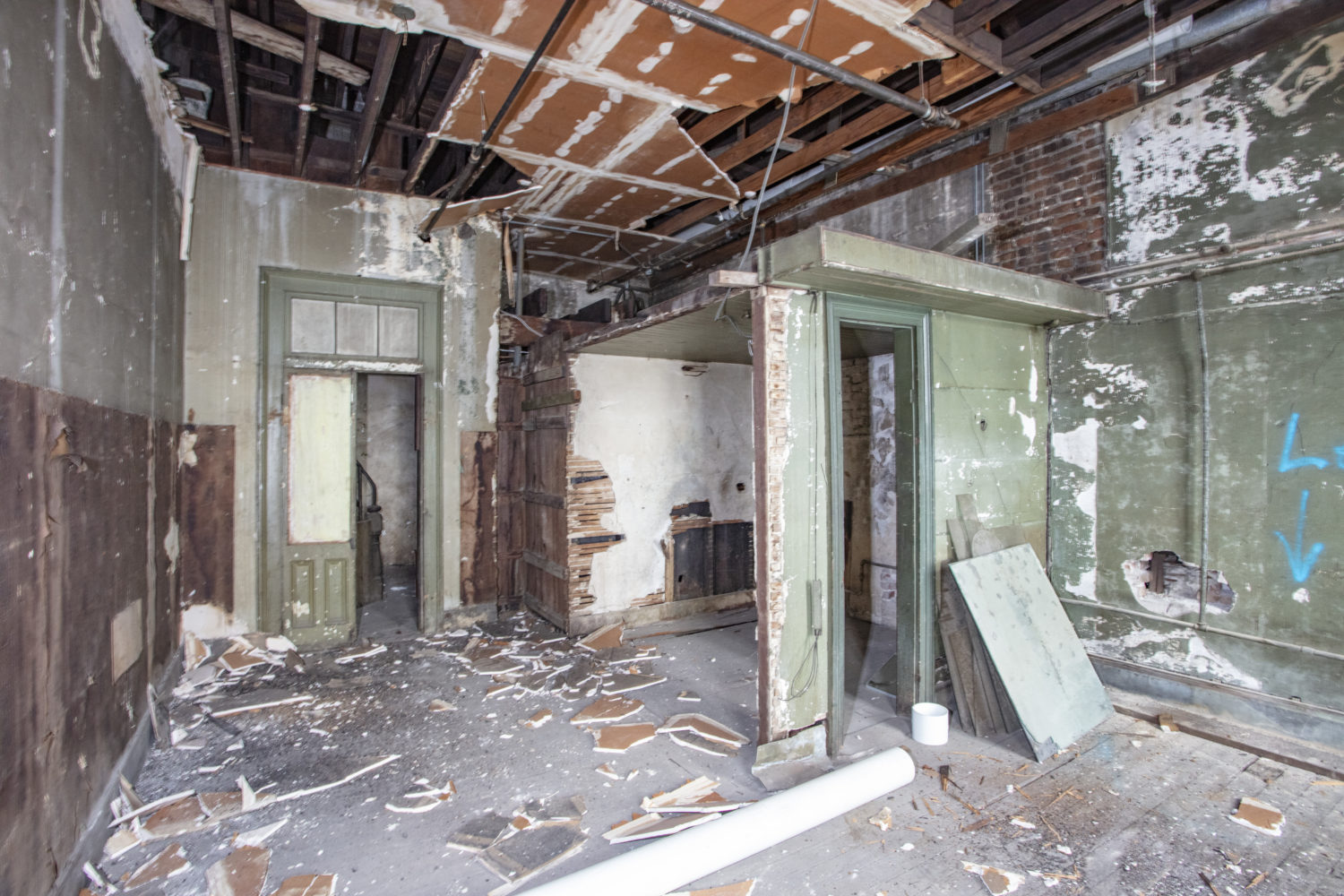Photo by Oldentimes Productions
This story appeared in the October issue of the PRC’s Preservation in Print magazine. Interested in getting more preservation stories like this delivered to your door monthly? Become a member of the PRC for a subscription!
I didn’t grow up in New Orleans, so I didn’t personally experience Canal Street in its heyday. But even those of us who are too young or too new to the city to have seen Canal Street back then still understand the important role it has played in the city’s history.
For much of the 20th century, children would go with their parents and grandparents, in their Sunday best, to shop and stroll. They’d arrive via streetcar to the grand boulevard lined with historic three-, four- and five-story buildings, some constructed prior to the Civil War, others built around the turn of the 20th century. Perhaps they’d visit an office, go to a movie or see the dentist. During Mardi Gras, they’d crunch in massive crowds to see the parades. It was the city’s most prestigious and bustling commercial district before shopping malls and big box stores all but eradicated the Main Street concept.
Of course, Canal Street was not accessible to all. Much of its history was defined by segregation, making equal access to the street’s amenities impossible for African Americans. Its prominence and racist policies made Canal a prime location for demonstrations during the Civil Rights era. Hundreds of protests between 1960 and 1964 led to the adoption of an Integration Agreement by many of the street’s businesses; the rest acquiesced after the passage of the 1964 Civil Rights Act required them to do so.
Canal’s grandeur remained prized by New Orleanians until suburban shopping venues began to lure visitors away. Office space in new buildings in Metairie became highly desirable, and commerce began to steadily leave. In its place, property owners opened T-shirt and souvenir shops with flashy lights and bright merchandise to lure tourists, who at a certain point seemed to be the only people on Canal.
As the quality of commerce declined, the crime went up. The years after Hurricane Katrina saw violent shootings and increased police presence.
But New Orleanians’ love for Canal Street never died. It continues to be visible especially during Carnival every year. And thanks to the vigilant work of the Downtown Development District to improve the street, combined with the efforts of a few stalwart property owners and new developers willing to take a chance, a dramatic shift in the quality of the businesses on Canal has been underway in recent years. (A special thank you goes to the Rubenstein and Adler families, whose esteemed businesses have withstood decades of changes and remain the retail anchors of the street.)
Advertisement
Canal Street’s stock is definitely on the rise. The Preservation Resource Center, in early 2018, started a program called Canal Street Catalyst, partnering with the Downtown Development District to help property owners develop plans to revitalize the many long-vacant upper floors in their historic buildings.
For many of the structures, modern building codes made it financially difficult if not impossible to redevelop the upper stories, so those spaces have sat empty for decades. As we began talking to property owners about working together, a wave of short-term rental deals began, and now many of the historic buildings on Canal and their vacant upper floors will be revitalized thanks to this new use.
Today, the PRC, Canal Street Catalyst and the DDD are working with property owners in the 600 block to help them decide how best to revitalize their building, and it is fascinating to see the architectural challenges that arise along the way — not to mention the financial and historical interpretation challenges, as well.
It is exciting to see the level of development and investment along Canal Street, and it’s a great sign for our city’s economy. This vital corridor continues to be, as it ever has been, the commercial spine of New Orleans, and our city continues to hope for a prosperous future for this storied street. For Canal Street, there are bright days ahead.
Danielle Del Sol is PRC’s Executive Director.
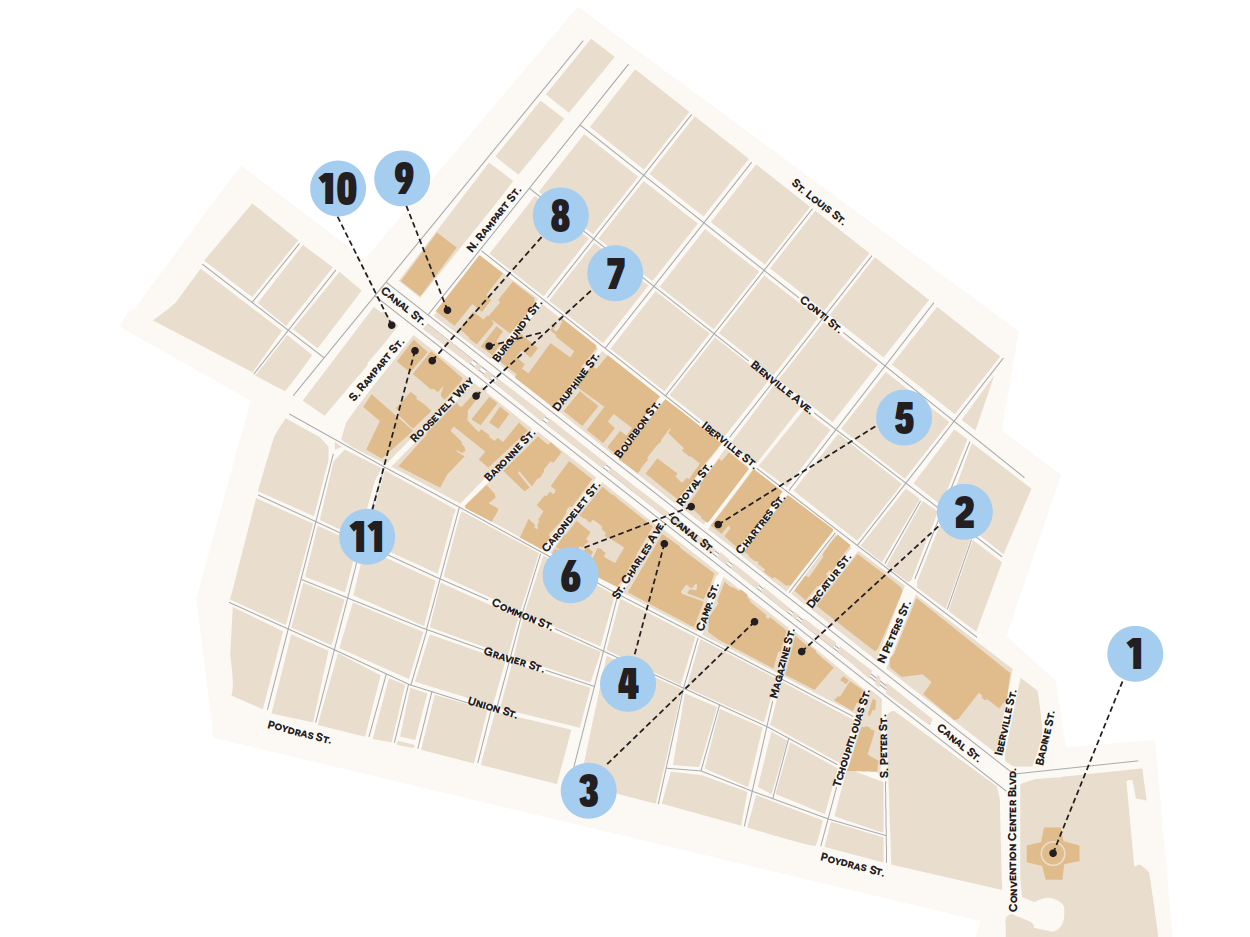
1) 2 Canal Street
World Trade Center / Four Seasons Hotel
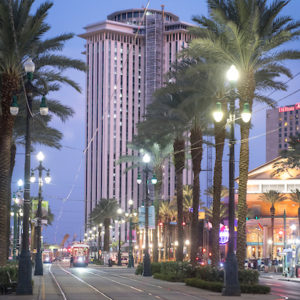 This 1968 building designed by Edward Durrell Stone was proposed for demolition in 2016. Instead, the 33-story structure was saved. Under renovation now, it will soon contribute millions in property and hotel tax revenue annually. This $460 million project will be home to a 341-room Four Seasons Hotel, 90 condos, two restaurants, 20,000 square feet of meeting space, gardens, a pool and more. Historic rehabilitation tax credit financing helped make this project possible. Construction is estimated to be complete in early 2020.
This 1968 building designed by Edward Durrell Stone was proposed for demolition in 2016. Instead, the 33-story structure was saved. Under renovation now, it will soon contribute millions in property and hotel tax revenue annually. This $460 million project will be home to a 341-room Four Seasons Hotel, 90 condos, two restaurants, 20,000 square feet of meeting space, gardens, a pool and more. Historic rehabilitation tax credit financing helped make this project possible. Construction is estimated to be complete in early 2020.
Developers: Woodward Interests and Carpenter & Co.
Architect: Trapolin Peer
Contractor: Woodward Design+Build
2) 442-444 Canal St.
Sanlin Building
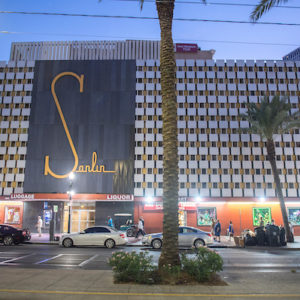 The Sanlin Buildings have been home to offices on their upper floors in recent years as well as plenty of empty space. The current renovation will transform the upper floors into short-term rental units. The Times-Picayune reported in October 2018 that short-term rental operator Sonder had long-term leases secured in three buildings on Canal, including the Sanlin. Plans indicate that the circa-1950s metal sheathing will be removed during the renovation, and the buildings will be restored to their 1840s appearance. Historic rehabilitation tax credit financing helped make this project possible.
The Sanlin Buildings have been home to offices on their upper floors in recent years as well as plenty of empty space. The current renovation will transform the upper floors into short-term rental units. The Times-Picayune reported in October 2018 that short-term rental operator Sonder had long-term leases secured in three buildings on Canal, including the Sanlin. Plans indicate that the circa-1950s metal sheathing will be removed during the renovation, and the buildings will be restored to their 1840s appearance. Historic rehabilitation tax credit financing helped make this project possible.
Owner and Developer: Quarter Holdings, LLC / Kishore “Mike” Motwani and family
Operator: Sonder
3) 101 Magazine St., corner of Canal Street
Sazerac House – read more here!
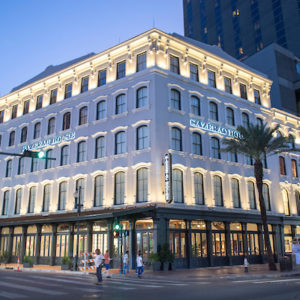 The spectacular renovation of this five-story, 48,000-square-foot building has created New Orleans’ newest museum. Filled with interactive exhibits designed by renowned curators Gallagher & Associates (who also worked on the World War II Museum), the Sazerac House opens to the public this month. The building also will house the company’s offices. Historic rehabilitation tax credit financing helped make this project possible.
The spectacular renovation of this five-story, 48,000-square-foot building has created New Orleans’ newest museum. Filled with interactive exhibits designed by renowned curators Gallagher & Associates (who also worked on the World War II Museum), the Sazerac House opens to the public this month. The building also will house the company’s offices. Historic rehabilitation tax credit financing helped make this project possible.
Owner and Developer: Sazerac Louisiana Holdings, LLC
Architect: Trapolin Peer
Contractor: Ryan Gootee General Contractors
Advertisement
4) 102 St. Charles Ave., corner of Canal Street
Rubensteins New Orleans
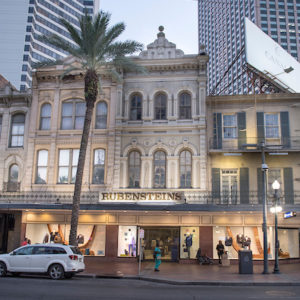 The Rubenstein family, whose upscale menswear store has been an esteemed fixture on Canal Street since 1924, is working with local developer Joe Jaeger and his company MCC Group to redevelop the upper floors of several connected buildings into a boutique hotel. The Rubensteins store will remain open during and after construction.
The Rubenstein family, whose upscale menswear store has been an esteemed fixture on Canal Street since 1924, is working with local developer Joe Jaeger and his company MCC Group to redevelop the upper floors of several connected buildings into a boutique hotel. The Rubensteins store will remain open during and after construction.
Owner: Andre and David Rubenstein
Developer: MCC Group
5) 617 Canal St.
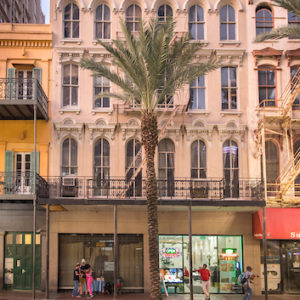 Plans were recently submitted to the Architectural Review Committee of the Historic District Landmarks Commission to revitalize this long-vacant building with ground-floor commercial space and residential units above, including a penthouse. Plans call for a 1,054-square-foot addition.
Plans were recently submitted to the Architectural Review Committee of the Historic District Landmarks Commission to revitalize this long-vacant building with ground-floor commercial space and residential units above, including a penthouse. Plans call for a 1,054-square-foot addition.
Owner: James and Vicky Salles
Architect: SCNZ Architects
6) 631-33 Canal St.
 The upper floors on this circa-1830s building — one of the oldest on Canal Street — will be redeveloped in coming months as the trust that owns the building works with the Preservation Resource Center and the Downtown Development District to determine the best use of the space.
The upper floors on this circa-1830s building — one of the oldest on Canal Street — will be redeveloped in coming months as the trust that owns the building works with the Preservation Resource Center and the Downtown Development District to determine the best use of the space.
Owner: A family trust
Architect: Trapolin Peer
Advertisement
7) 934, 1001, 1005, 1011 & 1015 Canal St.
Read more here!
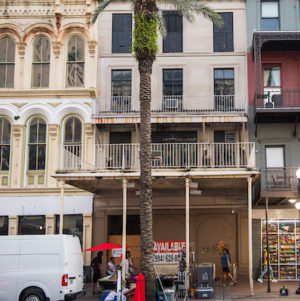 This grouping of buildings, which face Canal Street in adjoining blocks on opposite sides of the street, will be redeveloped by Redmellon Restoration & Development. Read about the project here.
This grouping of buildings, which face Canal Street in adjoining blocks on opposite sides of the street, will be redeveloped by Redmellon Restoration & Development. Read about the project here.
Owner: 934 Canal LLC/Hammy Halum
Developer: Redmellon
8) 1016-1022 Canal St.
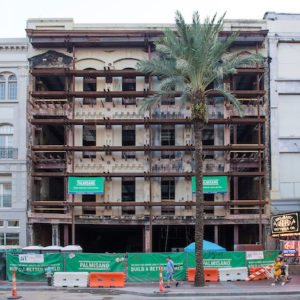 These buildings burned in 2015. A $10 million renovation will create 47 short-term rental units on the top three floors and a commercial space on the ground floor.
These buildings burned in 2015. A $10 million renovation will create 47 short-term rental units on the top three floors and a commercial space on the ground floor.
Developer: Quarter Holdings, LLC / Kishore “Mike” Motwani and family
Operator: Sonder
9) 1031 Canal St.
Hard Rock Hotel New Orleans and Residences
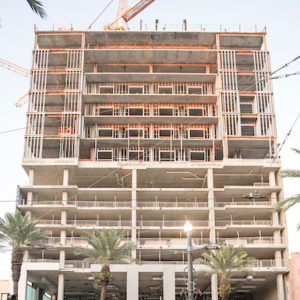 This new construction, 18-story tower sits on the site of the former Woolworth Department Store building. When complete, the building will host 350 Hard Rock Hotel rooms, 62 residential units, 12,000 square feet of event space, a rooftop bar, and lounges on the first and eighth floors.
This new construction, 18-story tower sits on the site of the former Woolworth Department Store building. When complete, the building will host 350 Hard Rock Hotel rooms, 62 residential units, 12,000 square feet of event space, a rooftop bar, and lounges on the first and eighth floors.
Owner/Developer: Hard Rock International + Kailas Companies
Architect: Harry Baker Smith Architects
Advertisement
10) 1100 Canal St.
Loews State Palace Theater
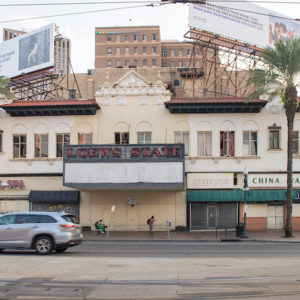 Plans to renovate the Loews are currently stalled at the Board of Zoning Adjustments as the owner asks for a 75-foot variance to build a 195-foot modern glass tower on top of the circa-1926, two-story, Spanish Revival-style theater. The tower will be taller than the new 180-foot Hard Rock Hotel being constructed across the street. The architect has stated that the owner’s intent is to preserve the exterior façade of the historic structure and the interior theater as part of the redevelopment. The Historic District Landmarks Commission has rejected two previous designs for the redevelopment of this structure in the past two years.
Plans to renovate the Loews are currently stalled at the Board of Zoning Adjustments as the owner asks for a 75-foot variance to build a 195-foot modern glass tower on top of the circa-1926, two-story, Spanish Revival-style theater. The tower will be taller than the new 180-foot Hard Rock Hotel being constructed across the street. The architect has stated that the owner’s intent is to preserve the exterior façade of the historic structure and the interior theater as part of the redevelopment. The Historic District Landmarks Commission has rejected two previous designs for the redevelopment of this structure in the past two years.
Owner: LC Hospitality Group LLC
Architect: Trapolin Peer
11) 1028 Canal St.
Hosteling International (HI) New Orleans
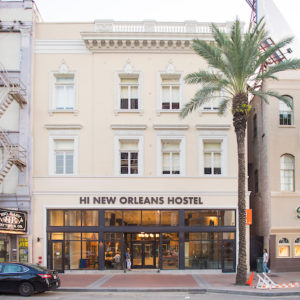 The former Pickwick Social Club building, constructed in 1896, has been transformed into the city’s largest hostel. The development used vacant upper floors in the adjacent Fischer’s Jewelry building to outfit five floors with 24 private rooms and shared rooms that accommodate a total of 122 beds. The building now holds a historic preservation easement with the Preservation Resource Center.
The former Pickwick Social Club building, constructed in 1896, has been transformed into the city’s largest hostel. The development used vacant upper floors in the adjacent Fischer’s Jewelry building to outfit five floors with 24 private rooms and shared rooms that accommodate a total of 122 beds. The building now holds a historic preservation easement with the Preservation Resource Center.
Owner: 1028 Canal Owner LLC
Developer: Hosteling International
Architect: Coleman Partners Architects LLC
Advertisements



